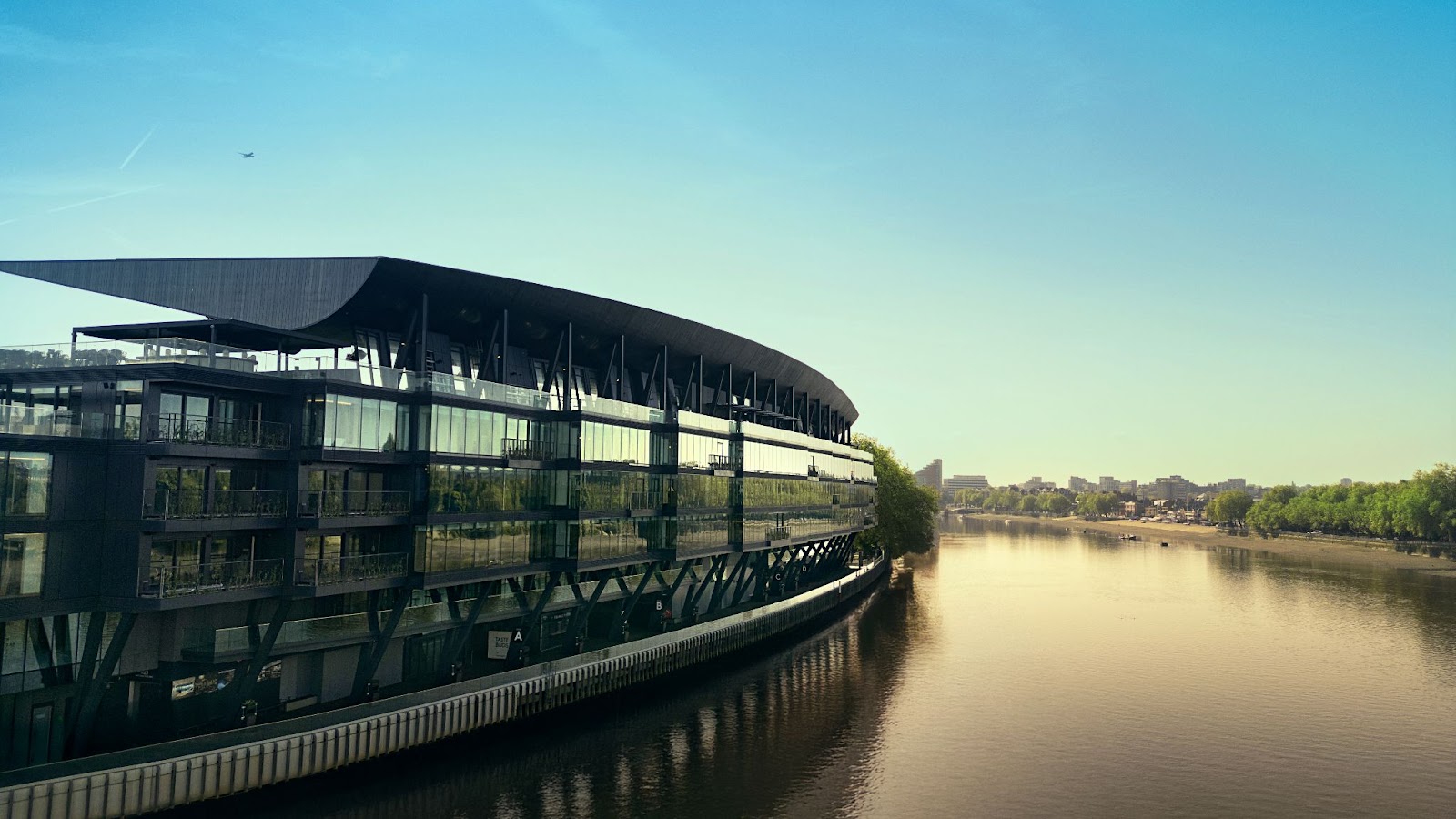Zaha Hadid Architects brings shock and awe to Antwerp’s Port Authority headquarters, says Ian Latham
Words
Ian Latham
Photos
Hélène Binet
It must have required supreme political acumen and steely determination to ensure Zaha Hadid Architects’ project for Antwerp’s new Port House wasn’t derailed in the years following its selection in a 2009 competition. The aims of the city’s planners are often at odds with the port authority’s agenda – the former favour ‘slow urbanism’, building incrementally with developers tamed into civic politesse, while the latter operates with a global ambition – and big, showy projects like this can face robust opposition. Antwerp’s much-needed Oosterweel ring road, not least, has been stymied for two decades by factional politics and local activism, and its showpiece Lange Wapper bridge, that would have formed a super-sized backdrop for the Port House, abandoned.
Antwerp’s port is Europe’s second busiest in terms of tonnage after Rotterdam, and is the self-styled ‘engine of the Belgian economy’. It is wholly owned by the city but operates with relative autonomy – there are few voters in its lucrative but unheralded 12,000-hectare terrain. The city of Antwerp lies on the river Scheldt, some distance inland from the North Sea coast, but the port’s inexorable seaward expansion was constrained by the border with Holland, so consolidation, efficiencies and brand-enhancement became the new priorities. Such factors certainly underpinned the port authority’s commissioning of Hadid to design its new headquarters –it had sound reasons to desire an icon, according to its president Marc Van Peel.
Having outgrown its nondescript offices overlooking the Napoleonic docks near the city centre – now a yacht harbour within the Het Eilandje redevelopment – the port authority acquired the former port fire station, located prominently on the Kattendijkdok and closer to the modern docks. The listed 1922 building was significant in the civic psyche because it replicated a historic sixteenth-century Hanseatic warehouse that had been destroyed by fire in 1893.
Housing all the port authority’s 500 staff would require an extension, however, so it teamed up with the Flemish government and city planners to invite expååressions of interest. Five architects were shortlisted: TV A2O Architecten from Hasselt, Xaveer De Geyter from Brussels, Vier Arquitectos from La Coruña, Rapp & Rapp from Rotterdam, and Zaha Hadid Architects from London. In the event, most struggled to engage with the neoclassical building, suggesting clumsy vertical extrusions that served only to highlight the dynamic possibilities that the ZHA scheme offered.
Guided by heritage consultant Origin, ZHA took cues from the equivalence of all four facades of the neoclassical fire station building as well as a tall tower envisaged by the original architect. Its strategy was to treat the fire station as a plinth and raise a contrastingly bulbous extension above on stilts. This had the merits of producing a prominent landmark, set between the historic city and the latter-day dockscape beyond, and of keeping the existing building largely intact, but with the potential for an inventive internal interplay between new and old.
The steel-framed volume, enveloped in triangulated glass cladding, is supported on sculpted concrete legs above the existing building, shifted slightly westwards to maximise daylight within the newly roof-glazed central entrance court. Its prominent prow gestures south towards the city centre. A restaurant, auditorium and meeting rooms together with an open viewing deck are sandwiched between largely open-plan office floors in both the extension and the refurbished building below. Accessed from a new southern piazza (newly named Zaha Hadidplein), the central court provides an impressive foyer, and from here lifts rise (at first, wittily, inside the former hose-drying tower), to the upper levels. Canted steel columns punch up through the glass roof to lend lateral stability, black-painted in contrast to the two giant concrete legs that support the steel-framed structure that floats cinematically above.
The wraparound cladding of glazed panels, a mix of transparent and opaque to temper internal conditions and reflect both sky and water, is configured to suggest a dynamic emphasis, with the smooth surface of the southerly cantilever giving way to a fractured pattern, as if dislodged by turbulence – supposedly a reference to the city’s diamond trade, but strongly evoking the artworks of Italian Futurists Umberto Boccioni and Giacomo Balla.
The Port House inevitably recalls a ship’s hull, although its architectural ancestors include Archigram’s Walking City, as if emerging from the silted depths of the Scheldt river to rest on the old fire station on its route southwards. According to ZHA senior associate Joris Pauwels, Zaha Hadid’s particular preoccupations here were in ‘layering’, making a dynamic mass seem lightweight, and to ‘neutralise gravity’ in a similar manner to the Phaeno Science Centre in Wolfsburg (2005), perhaps the practice’s most accomplished work.
The Port House is daring in its juxtaposition of new and old, and its no surprise that the building has polarised local opinion. Questions of scale and appropriateness inevitably arise, and in some respects the apparent insensitivity to the historic fire station is difficult to defend. But whereas the old building had shifted off the civic radar, alone and unwanted, it has now been drawn into a highly significant urban and symbolic supporting role.
With its masterly manipulation of flowing, interconnected space, ZHA’s particular achievement has been to make the whole far greater than the sum of its two parts. What sets the project apart from mere gesture, moreover, is the fact that the Port House promises to serve well both as a potent symbol for the port authority and, equally significantly, as an efficient and exciting workplace.
Additional Images
Download Drawings
Credits
Architect
Zaha Hadid Architects
Executive architect
Bureau Bouwtechniek
Structural engineer
Studieburo Mouton
Services engineer Ingenium
Ingenium
Acoustic engineer
Daidalos Peutz
Restoration consultant
Origin

























